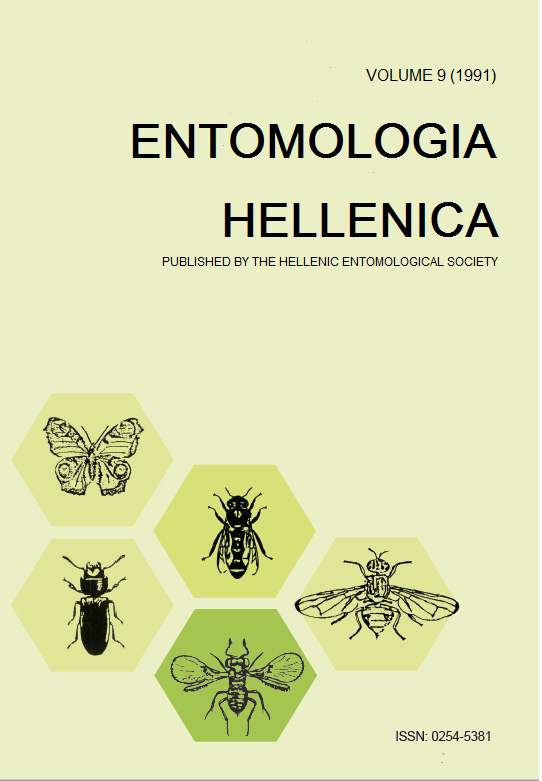Abstract
Bostrychidae is primarily a family of wood-boring beetles, distributed mainly in the tropics and subtropics. Many species are serious pests of growing trees and felled timber. One species, Rhysopertha dominica (F.), is a grain borer and the most frequently met among beetles infesting stored wheat in Greece (Buchelos 1981). Two other bostrychids, Dinoderus minutia (F.) and Dinoderus brevis Horn, have been recently found in Greece infesting bamboo articles imported from Hong-Kong and the Philippines respectively. Wooden parts (branches of 3 to 18 cm in diameter) of Brachychiton acerifolium Mull. and Brachychiton diversifolium G. Don. (Sterculiaceae) trees, widely used as ornamentals in alleys and parks in Attika, Greece, that have been cut and stored for one at least year in the open, were found heavily infested by bostrychid beetles and their larvae; the exterior of these branches was densely perforated by tunnel openings about 1,5 mm in diameter, while the interior presented an almost complete deterioration due to numerous galleries caused by the insects. Due to the fact that the living Brachychiton trees of the region examined were found infestation free, one is lead to the conclusion that the infestation occurred after felling; furthermore, the infestation on B. acerifolium seemed more severe than on B. diversifolium wooden parts. The identification of the adults, based on taxonomic keys of Lesne 1900, Renter 1911, Por to 1929, Portevin 1931 and Fisher 1950, lead to Scobicia chevrieri (Villa) and was confirmed by the identification group of the Bayerische Staatsamlung, Munich. The species belongs to the subfamily Bostrychinae, tribe Xyloperthini, genus Scobicia Lesne; it has also been found under the synonyms: Apate chevrieri Villa, Apate capilata Dejean, Xylopertha chevrieri J. Duval, Xylopertha foveicollis Allard, Xylopertha pustulate Kiesenwetter and Scobicia pustulate Jacobson. The adults found in the region of Attika, near Athens, are 3.3-4.5 mm long and 1.2 to 1.5 wide. S. chevrieri is reported being distributed in many regions of Italy from the Alpes and Tyrol to Sardinia and Sicily, across the French Mediterranean coast and Corsica, Spain (Malaga, Seville, Cordoba), Morocco, Tunisia, Algeria, Israel, Libanon, Syria, Caucasus, Crimea and Cyprus. In the relevant literature, S. chevrieri is recorded attacking mainly dead branches of the following plants: fig (Ficus sp.), mulberry (Maras sp.), green oak (Quercus ilex L.), English oak (Quercus robur L.), evergreen oak (Quercus coccifera L.), laurel (Laurus nobilis L.), mastic-tree (Pistacia lentiscus L.), birch (Betula sp.), fox grape (Nibs lahrusca L.), pomegranate (Punica granatani), chestnut (Castanea sp.) and gem-tree (Eucalyptus spp.). Brachychiton spp. is recorded here for the first time as host of the insect.




